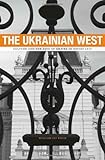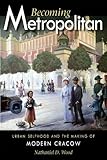Support H-Net | Buy Books Here | Help Support the NBN and NBN en Español on Patreon | Visit New Books Network en Español!
- African Studies
- African American Studies
- American Politics
- American Studies
- American South
- American West
- Asian American Studies
- Australian and New Zealand Studies
- British Studies
- Canadian Studies
- Caribbean Studies
- Central Asian Studies
- Chinese Studies
- East Asian Studies
- Eastern European Studies
- European Politics
- French Studies
- German Studies
- Iberian Studies
- India Studies
- Indian Ocean World
- Iranian Studies
- Irish Studies
- Israel Studies
- Italian Studies
- Japanese Studies
- Korean Studies
- Latino Studies
- Latin American Studies
- Mexican Studies
- Middle Eastern Studies
- Native American Studies
- Pacific Studies
- Polish Studies
- Russian and Eurasian Studies
- Southeast Asian Studies
- South Asian Studies
- Turkish Studies
- Ukrainian Studies
- Western European Studies
- World Affairs
- Animal Studies
- Anthropology
- Archaeology
- Business, Management, and Marketing
- Media
- Critical Theory
- Disability Studies
- Drugs, Addiction and Recovery
- Education
- Economics
- Finance
- Geography
- Gender Studies
- Genocide Studies
- Higher Education
- Human Rights
- Journalism
- Language
- Law
- LGBTQ+ Studies
- National Security
- Philanthropy
- Philosophy
- Policing, Incarceration, and Reform
- Political Science
- Politics & Polemics
- Public Policy
- Sex, Sexuality, and Sex Work
- Sociology
- Sound Studies
- Sports
- Urban Studies
- Big Ideas
- Celebration Studies
- Co-Authored
- Cover Story
- Historical Materialism
- History Ex Silo
- Interpretive Political and Social Science
- Invested Investor
- Landscape Architecture
- Late Antiquity
- Mormonism
- NBN Book of the Day
- NBN Seminar
- Postscript: Conversations on Politics and Political Science
- Practical History
- Preparing for Life After Grad School
- Psychology and Climate Change
- Syriac Studies
- The Chair: In The Room at the Fed
- New Books with Miranda Melcher

Sep 26, 2015
Student Politics in Communist Poland
Generations of Consent and Dissent
Summary
In the conventional narratives of Communist Poland, and Eastern Europe more generally, student activism tends to get short shrift. While the role of students in 1956 is unavoidable and widely acknowledged, after that their role and their relationship to the society at large has been minimized. The famous Kuron-Modzielewski letter of 1964 is treated first and foremost as an intra-elite affair, while the failure of the student protests in 1968 to provoke a broader movement as well as students' subsequent lack of involvement in the protests of December 1970 have been taken as evidence of students' lack of connection to broader society. Only in the late 1970s did was that gap bridged, first with founding of KOR after the strikes of 1976 and then during the Solidarity era. This account has been pervasive since the 1970s, and even people with only passing knowledge of Polish history have been exposed to it through Andrzej Wajda's 1981 film "Man of Iron." There the student turned factory worker Maciej Birkut recounts first being told by his father the former Stakhanovite turned worker activist that 1968 is not the right time to challenge the governments and then stands by in spite during the strikes of 1970 only to learn of his father's death. Yet as so often happens when a historian take up a topic that has become so engrained that most people do not even stop to question it. In his new book Student Politics in Communist Poland: Generations of Consent and Dissent (Lexington Books, 2015), Tom Junes reveals that received narrative to be a myth that bears only partial connection to the truth. Covering the development of student politics in Poland from 1946 until the end of Communism, Junes argues that there were 8 distinct generations of students during that period, beginning with the students of the immediate postwar period whose worldview was shaped by their pre-War and War experiences to the students of the 1980s who embraced Solidarity, but felt betrayed by the roundtable negotiations that brought an end to Communist rule in 1989. It is a scrupulously researched book drawing on oral history as well as conventional primary source documents, and it was a pleasure to speak with Junes recently about his research.






































































































